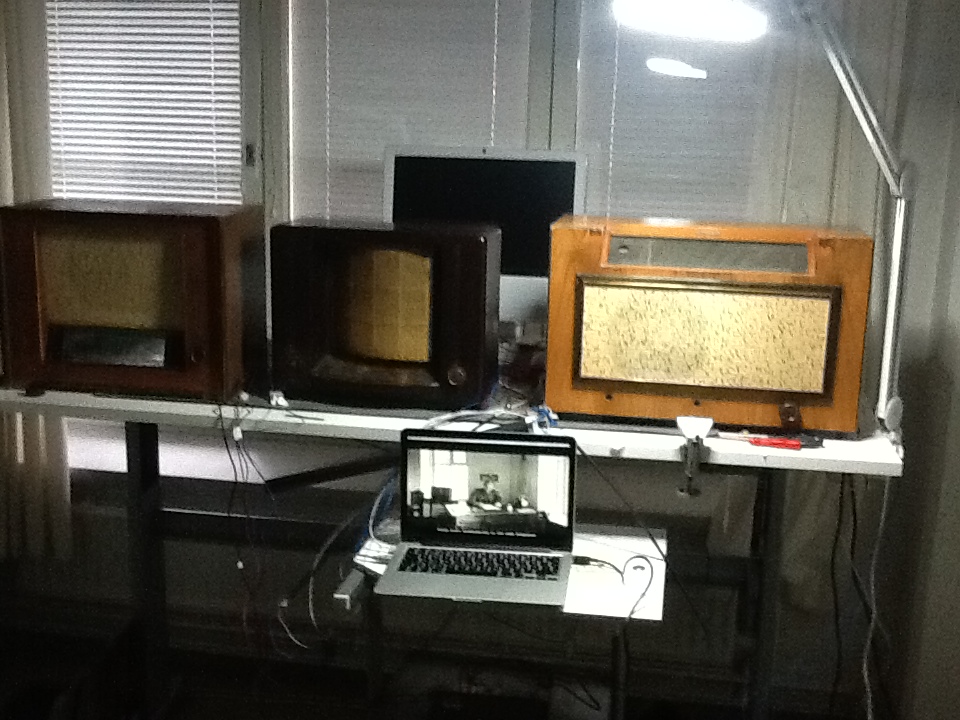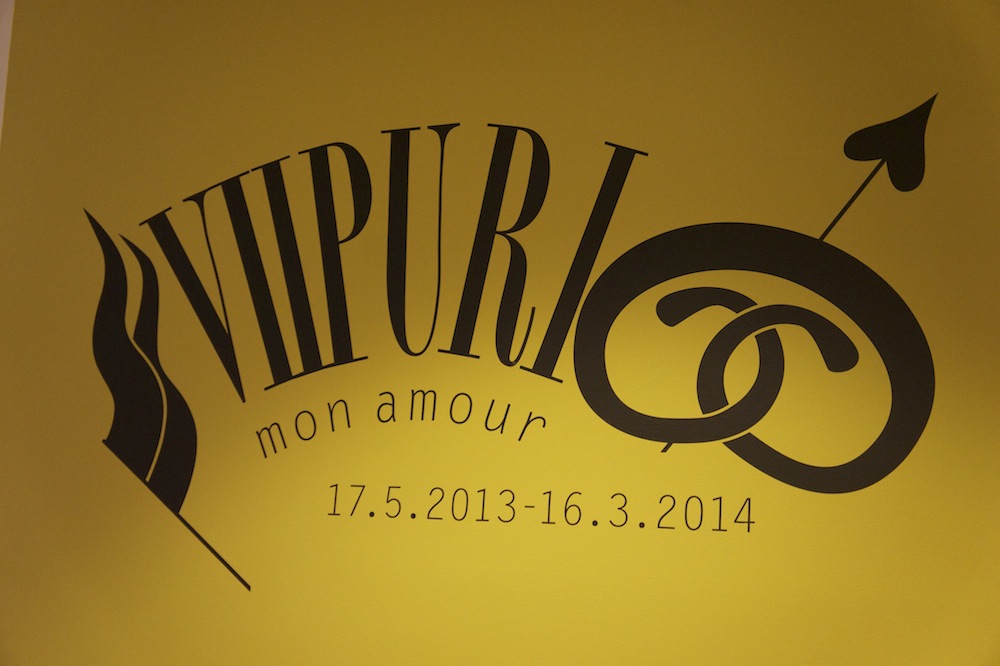
Radio Mines is an interactive installation for the Radio and TV Museum of Lahti. It provides audience an insight in to the matter of using radio waves on the Finnish Continuation War. Finally it aims ensure a both Hands-On and Minds-On experience. The project started as a collaboration between Media Lab Helsinki the Museum of History in Lahti Finland.
Radio Mines from Juan Duarte Regino on Vimeo.
The installation is a functional, engaging and immersive setup. At the same time, museum visitors can hear, see and participate with the installation. Also, it seeks to be attractive for visitors of all ages, by compelling a historical topic through new media technologies.

Radio Mines starts with a wartime-like radio voice narrating the story of events, lights fade out and somewhere there is a bomb exploding. At this stage there is nothing to take part in, only watching and listening. When the game like part begins, users are asked to turn the knobs into right frequencies in order to save the city of Viipuri.
When the game part is successfully achieved, Säkkijärven polkka is played on the radios.
Original props, like non exploded radio mines are placed nearby the exhibiton space to bring together a realistic atmosphere to the installation.
Interaction design
Radio Mines aims to fit into a wide audience habituated to play with video games and other type of interactive technologies. Although at the same time the technical setup needed to be very simple to use. Consequently, it was chosen to use vintage radios, to concentrate all the control features on simple gesture of turning knobs to trigger events and control the radio tuning. By turning the three radio's tuning knobs into synchrony the Säkkijärven polkka becomes fine tuned and Vyborg is saved from bomb detonations.
Photographic material
The museum of radio and tv of Lahti provided original and unreleased photographic material from their archives.

Sound Design
The sound atmosphere had to be an integral part of the installation. The soundtrack was designed by Jairo Acosta Lara. It comprised a recording of a Finnish actor to narrate the story of Säkkijarven Polkka. This voice over, worked out well and succeeds in creating an intense atmosphere. It was included english subtitles for foreign visitors.
Programming
The program runs in Pure Data extended, and uses several objects provided in the GEM library. This helped to synchonize sound with visual elements displayed in the movie and in the game like part. Additionally, the radio frequencies are displayed as live spectrum of audio signal that becomes fully drawn when is rightly tuned. Finally radio knobs are connected to Arduino to provide start, and tune radios.
Techniques
The techniques of the installation wanted to be as easy to use as possible by the museum staff and also the museum visitors. The technical equipment wanted to be hidden from the viewers inside wartime props. The tech setup comprises: Arduino Microcontroller + Potentiometers + Portable computer + 6 channel sound card + sound pre amps + speakers. The aim was to use as good a quality technique as possible but due to the project funding some compromises had to be done.




Museum
The idea of using old radios instead of an accordion, was very good and seems to work very nicely. It has been seen although that it is not very likely for visitors to automatically see that you are allowed to touch the old radios. this has to be told to them personally in many cases although it is shown in written manner in the introduction scene. Installation is well suited for three persons to be active at the time but a larger group can be watching the installation at the same time. The installation in itself is very easy to use.


Funding:
The project got funding from the Finnish National Bureau of Antiquities. The Innovative funding was part of three museum's collaboration to use new technologies in telling the museum story. The funding made the project possible, it covered the labor and technical costs and props purchases.
The production was realized with the assistance of the Media Lab Helsinki and the Radio and TV Museum of Lahti.